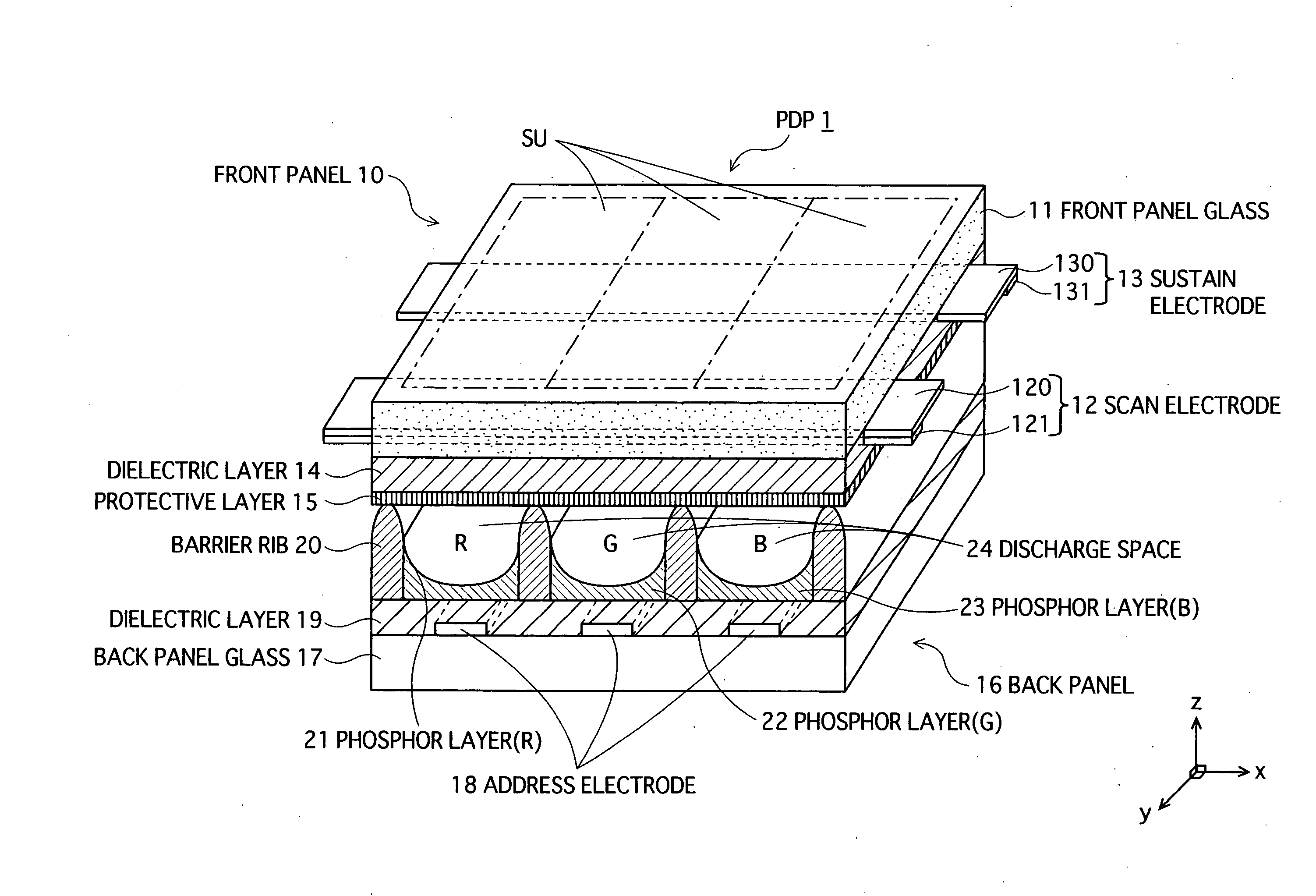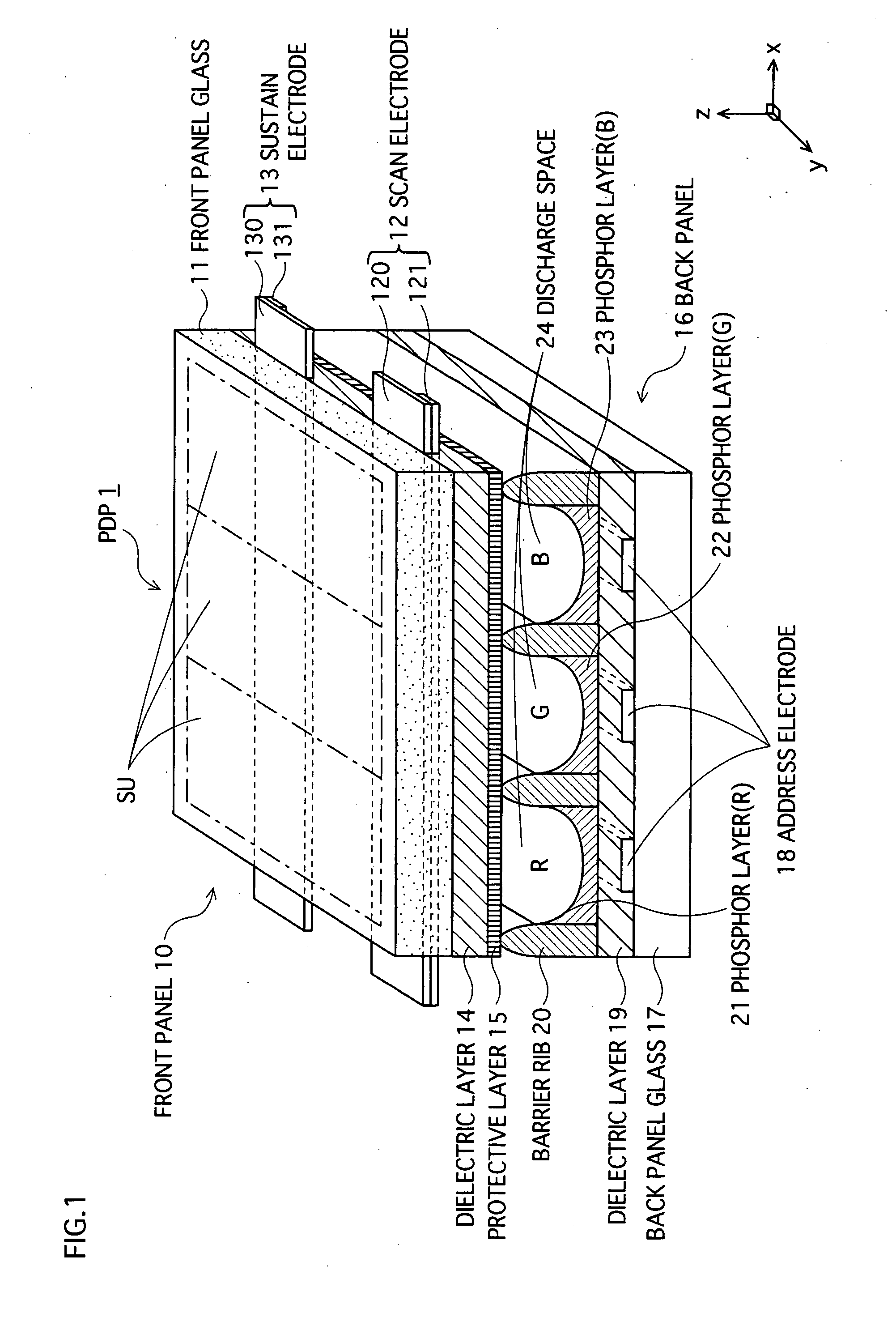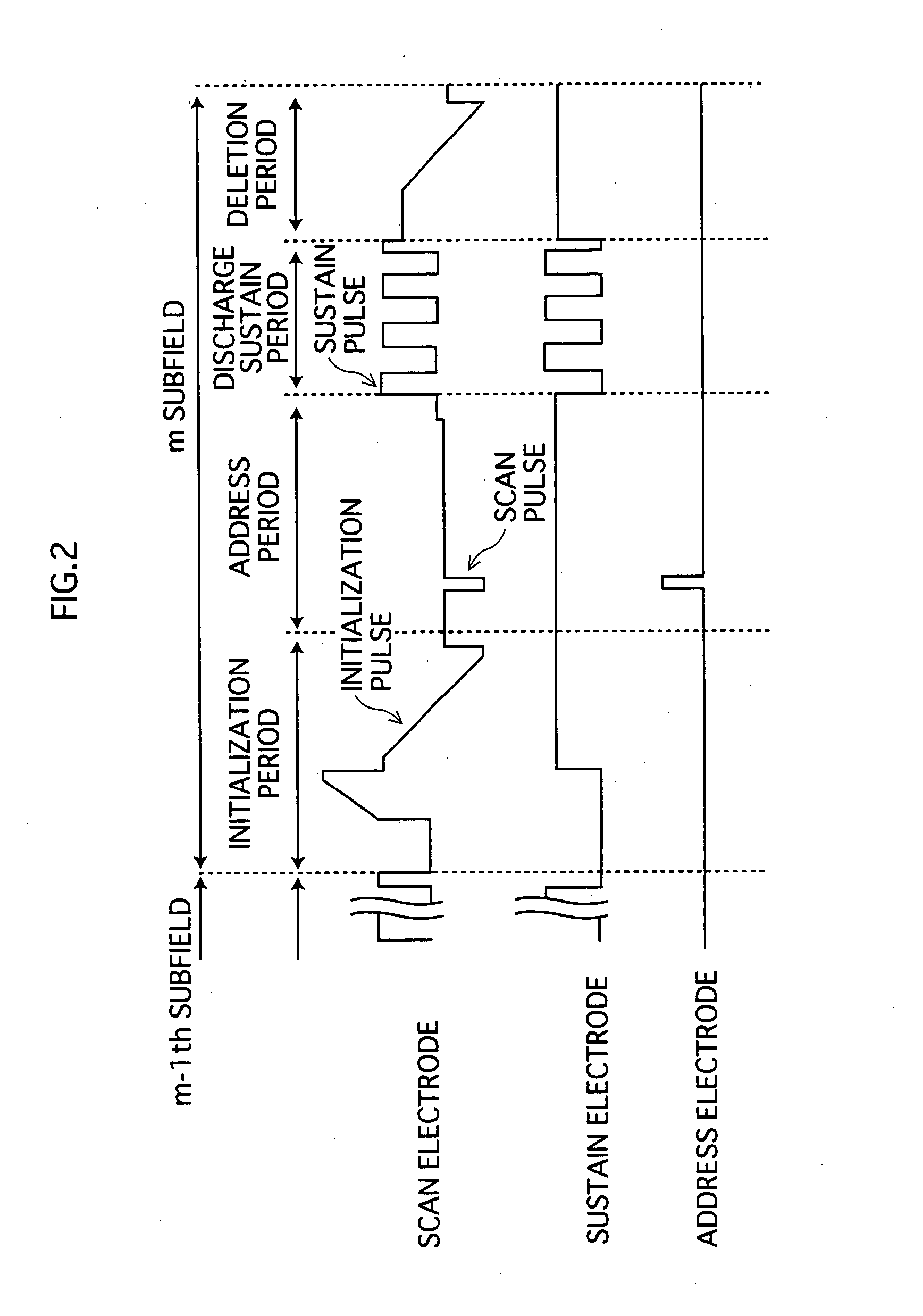Gas Discharge Display Panel
a display panel and gas discharge technology, applied in the manufacture of electric discharge tubes/lamps, cold cathode manufacture, electrode systems, etc., can solve the problems of discharge delay, characteristic change of protective layer, and easy “discharge delay” of conventional protective layers, so as to reduce the starting voltage of discharge and low cost
- Summary
- Abstract
- Description
- Claims
- Application Information
AI Technical Summary
Benefits of technology
Problems solved by technology
Method used
Image
Examples
first embodiment
[0040] 1-1. Structure of PDP
[0041]FIG. 1 is a partial perspective view showing a main structure of an AC-type PDP 1, according to the first embodiment of the present invention. In the drawing, the z-direction corresponds to a thickness direction of the PDP 1, and the xy plane corresponds to a plane parallel to the surface of the panels of the PDP 1. Here, the PDP 1 has an NTSC specification of 42 inches for example. However needless to say, the present invention is also applicable to other specifications, including XGA, and SXGA. The present invention is also applicable to other sizes.
[0042] As FIG. 1 shows, the PDP 1 is mainly structured by a front panel 10 and a back panel 16 whose main surfaces are opposed to each other.
[0043] On one main surface of the front panel glass 11 that is a substrate of the front panel 10, a plurality of pairs of display electrodes 12 and 13 (scan electrode 12 and sustain electrode 13) are provided. Each display electrode 12, 13 is formed by stacking...
modification example 1
[0181] In the present modification example 1, first, a film mainly composed of MgO and additionally containing Si or Ge is formed using the method described in the first embodiment.
[0182] Then, means for generating H ion is used as a method of doping the H atoms to the film, thereby irradiating H ion on the surface of the formed film.
[0183] Here, the setting conditions are as follows for example: using a heater, the substrate is heated to the temperature of 100-300 degrees Celsius within the doping chamber of H atoms, and the chamber is evacuated until the vacuum level reaches 1×10−4-7×10−4 Pa.
[0184] After this, H ions are irradiated onto the protective layer 15 having been formed on the substrate using an ion gun linked to the H container, thereby doping H atoms of the protective layer 15. The amount of flowing for H is set in the range of 1×10−5-3×10−5 m3 / min.
modification example 2
[0185] In the modification example 2, first a film made of MgO is formed using the method described in the first embodiment. Then the formed film is placed in a chamber. While the film is being subjected to plasma processing in the atmosphere containing H, and an evaporation source created by mixing a Si compound and a Ge compound is heated using an electron beam gun, thereby completing a protective layer containing H and either Si or Ge.
PUM
| Property | Measurement | Unit |
|---|---|---|
| wavelength range | aaaaa | aaaaa |
| wavelength range | aaaaa | aaaaa |
| wavelength range | aaaaa | aaaaa |
Abstract
Description
Claims
Application Information
 Login to View More
Login to View More - R&D
- Intellectual Property
- Life Sciences
- Materials
- Tech Scout
- Unparalleled Data Quality
- Higher Quality Content
- 60% Fewer Hallucinations
Browse by: Latest US Patents, China's latest patents, Technical Efficacy Thesaurus, Application Domain, Technology Topic, Popular Technical Reports.
© 2025 PatSnap. All rights reserved.Legal|Privacy policy|Modern Slavery Act Transparency Statement|Sitemap|About US| Contact US: help@patsnap.com



